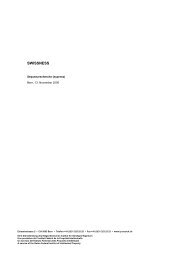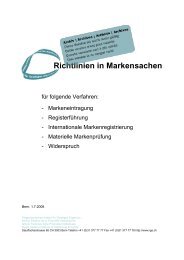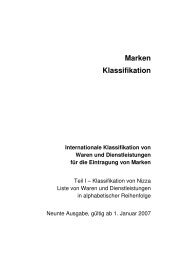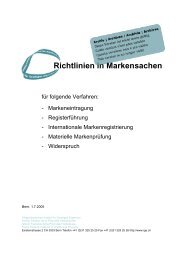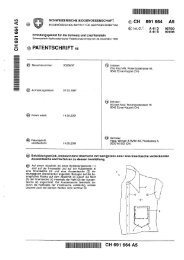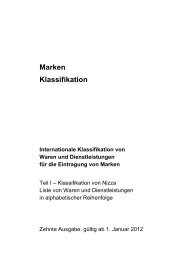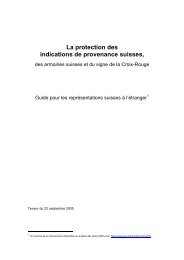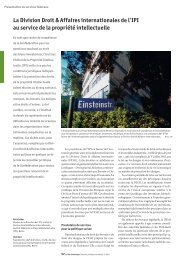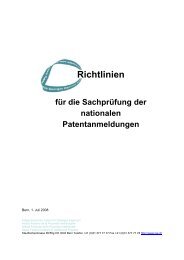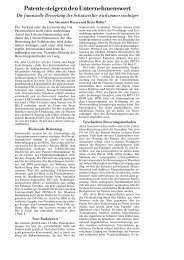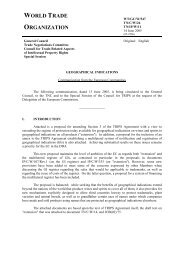AVIS DE DROIT PROTECTION DES SIGNES NATIONAUX
AVIS DE DROIT PROTECTION DES SIGNES NATIONAUX
AVIS DE DROIT PROTECTION DES SIGNES NATIONAUX
You also want an ePaper? Increase the reach of your titles
YUMPU automatically turns print PDFs into web optimized ePapers that Google loves.
ETATS-UNIS<br />
Various federal statutes and regulations prohibit or restrict the use of certain words,<br />
names, symbols, terms, initials, marks, emblems, seals, insignia, badges, decorations,<br />
medals and characters adopted by the United States government or particular national<br />
and international organizations. These designations are reserved for the specific<br />
purposes prescribed in the relevant statute and must be free for use in the prescribed<br />
manner. See the listings of citations to sections of the United States Code and the Code<br />
of Federal Regulations in Appendix C 357 of TMEP.<br />
For example, Congress has created about 70 statutes that grant exclusive rights to use<br />
certain designations to federally created private corporations and organizations.<br />
Violation of some of these statutes may be a criminal offense, e.g., 18 U.S.C. §708<br />
(coat of arms of the Swiss Confederation). 358<br />
Debt Collection<br />
15 U.S.C. § 1692e provides as follows:<br />
A debt collector may not use any false, deceptive, or misleading representation or means in<br />
connection with the collection of any debt. Without limiting the general application of the<br />
foregoing, the following conduct is a violation of this section: […]<br />
9) The use or distribution of any written communication which simulates or is falsely<br />
represented to be a document authorized, issued, or approved by any court, official or agency<br />
of the United States or any State, or which creates a false impression as to its source,<br />
authorization, or approval..<br />
The Designation “Made in USA”<br />
See Sections 3(a) and 4(b)(2) below.<br />
such persons when they have become entitled to use such marks as a result of their concurrent lawful<br />
use in commerce prior to (1) the earliest of the filing dates of the applications pending or of any<br />
registration issued under this Act; (2) July 5, 1947, in the case of registrations previously issued under<br />
the Act of March 3, 1881, or February 20, 1905, and continuing in full force and effect on that date;<br />
or (3) July 5, 1947, in the case of applications filed under the Act of February 20, 1905, and<br />
registered after July 5, 1947. Use prior to the filing date of any pending application or a registration<br />
shall not be required when the owner of such application or registration consents to the grant of a<br />
concurrent registration to the applicant. Concurrent registrations may also be issued by the Director<br />
when a court of competent jurisdiction has finally determined that more than one person is entitled to<br />
use the same or similar marks in commerce. In issuing concurrent registrations, the Director shall<br />
prescribe conditions and limitations as to the mode or place of use of the mark or the goods on or in<br />
connection with which such mark is registered to the respective persons.<br />
Ibid.<br />
357 Available at: http://tess2.uspto.gov/tmdb/tmep/appendix_c.htm.<br />
358 Id. § 1205.<br />
212



